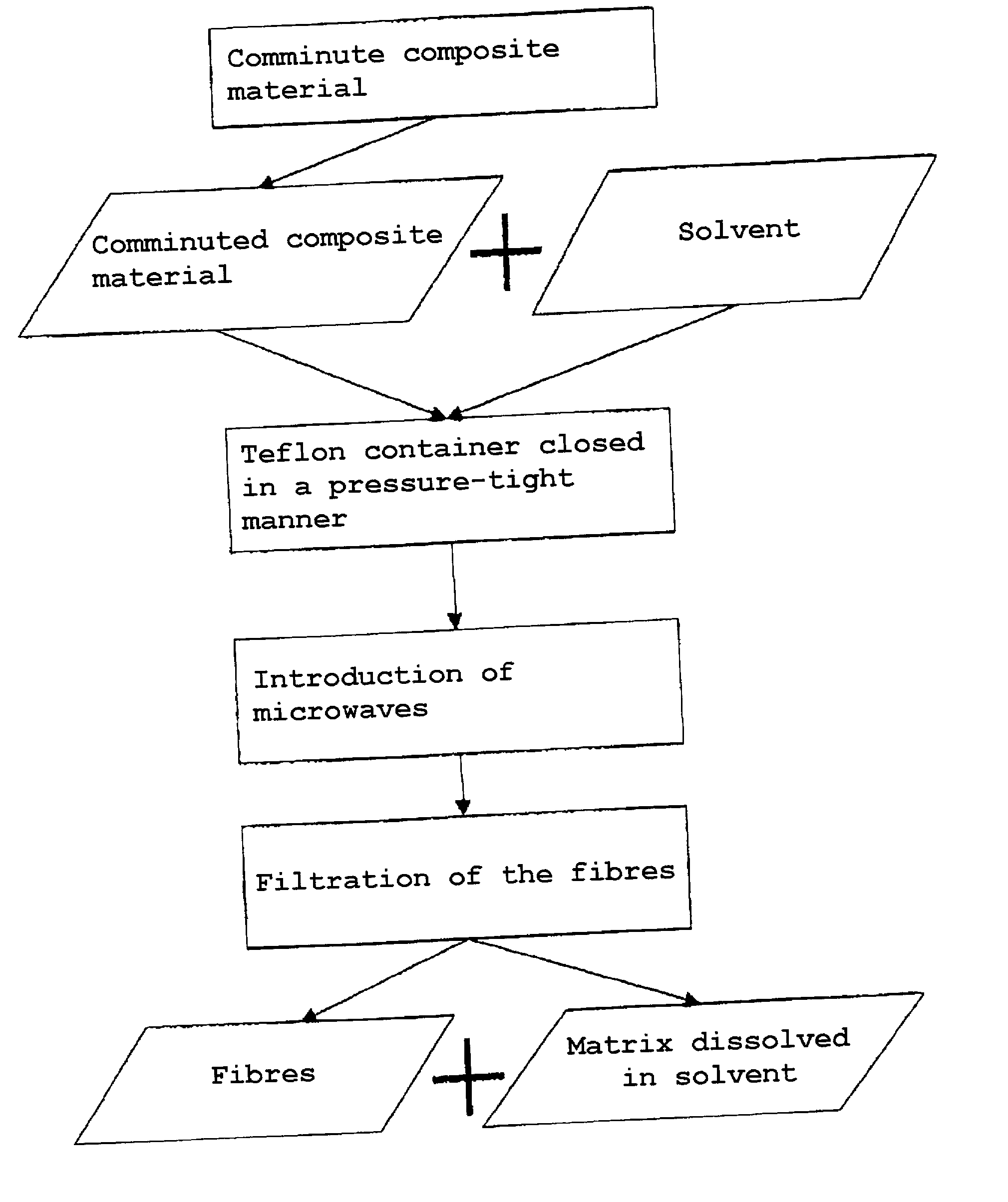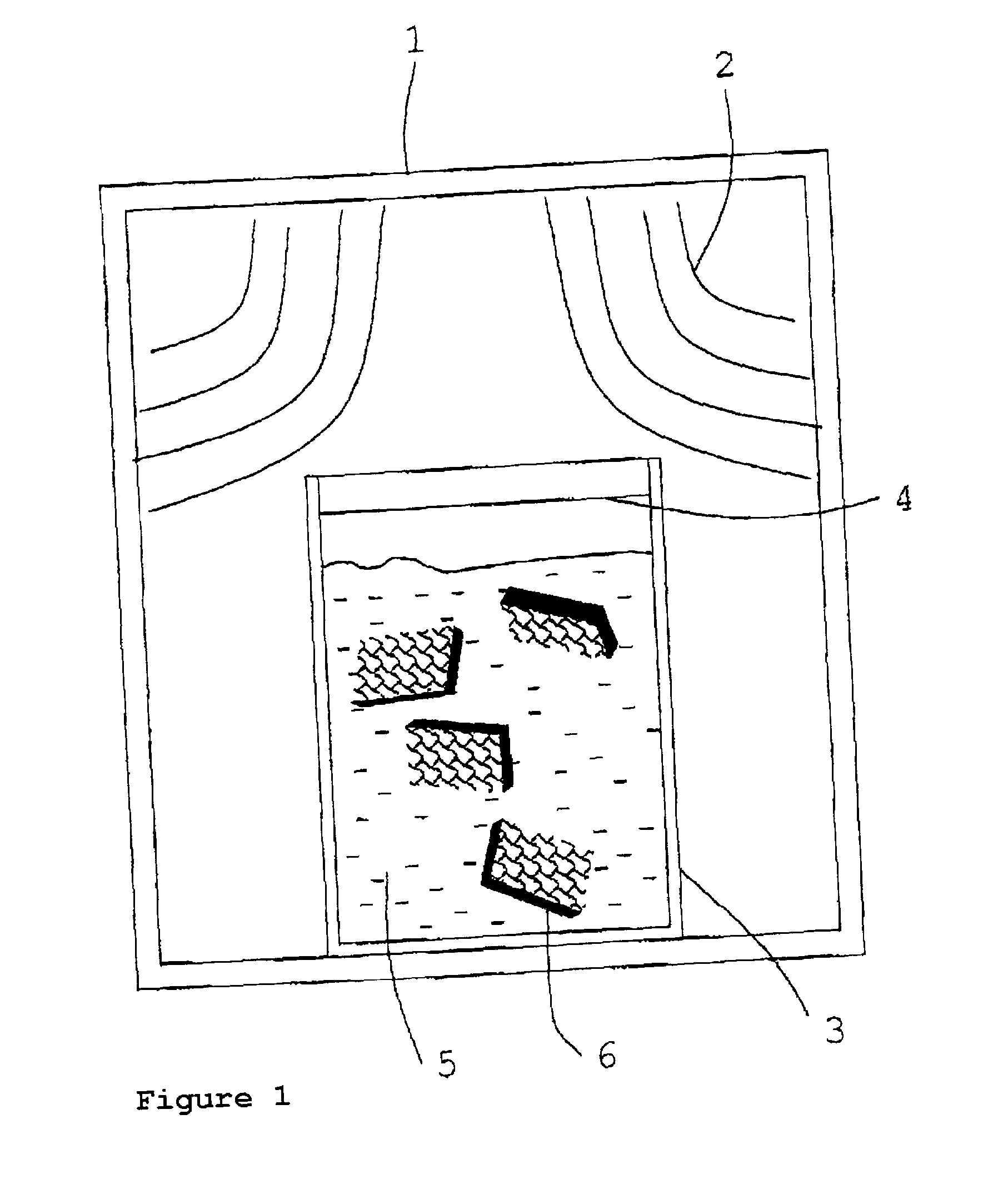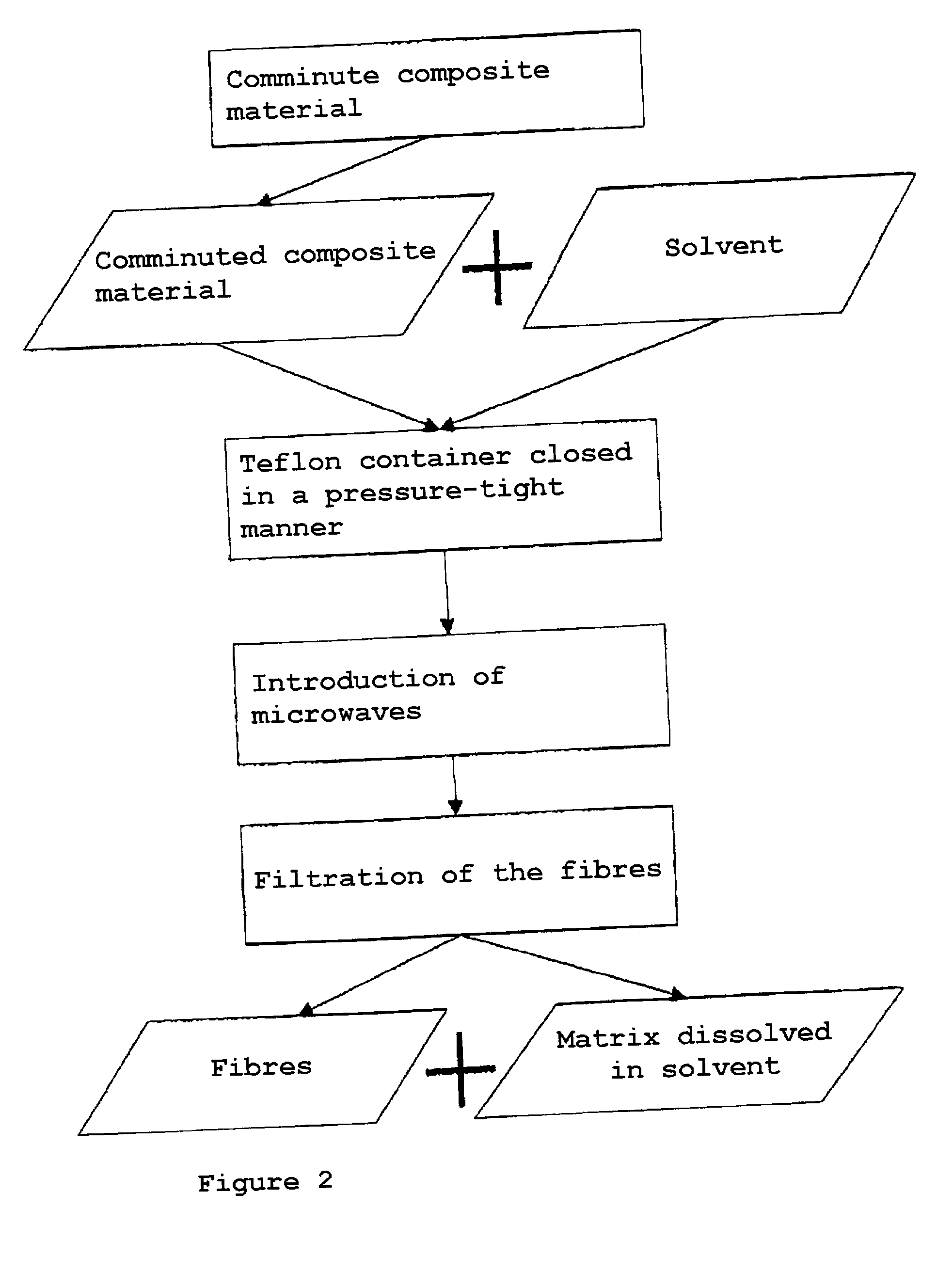Process for recycling fiber composite materials
a fiber composite material and composite material technology, applied in the field of fiber composite material recycling, can solve the problems of inability to produce a different type of fiber composite material, separation between fibers and matrix, etc., and achieve the effect of facilitating the cleaving of polymer chains and higher dielectric loss factor
- Summary
- Abstract
- Description
- Claims
- Application Information
AI Technical Summary
Benefits of technology
Problems solved by technology
Method used
Image
Examples
example 2
[0023] The test material used was a commercially available carbon fiber-reinforced plastic woven fabric. Cured epoxy was the plastic matrix, as used in the aircraft construction sector. A square specimen piece with an edge length of 1 cm, together with 20 ml of N-methylpyrrolidone, in a TEFLON.RTM. container 3, was introduced into the microwave oven 1 shown in FIG. 1. A microwave program (FIG. 3), which allows an energy introduction of 0.196 Wh, was started. After the program time had ended, the content of the pressure vessel was filtered, and what remained was the carbon fibers from which the plastic matrix had been completely removed. These fibers were rinsed using distilled water and were then dried in air.
PUM
| Property | Measurement | Unit |
|---|---|---|
| frequency | aaaaa | aaaaa |
| length | aaaaa | aaaaa |
| energy | aaaaa | aaaaa |
Abstract
Description
Claims
Application Information
 Login to View More
Login to View More - R&D
- Intellectual Property
- Life Sciences
- Materials
- Tech Scout
- Unparalleled Data Quality
- Higher Quality Content
- 60% Fewer Hallucinations
Browse by: Latest US Patents, China's latest patents, Technical Efficacy Thesaurus, Application Domain, Technology Topic, Popular Technical Reports.
© 2025 PatSnap. All rights reserved.Legal|Privacy policy|Modern Slavery Act Transparency Statement|Sitemap|About US| Contact US: help@patsnap.com



